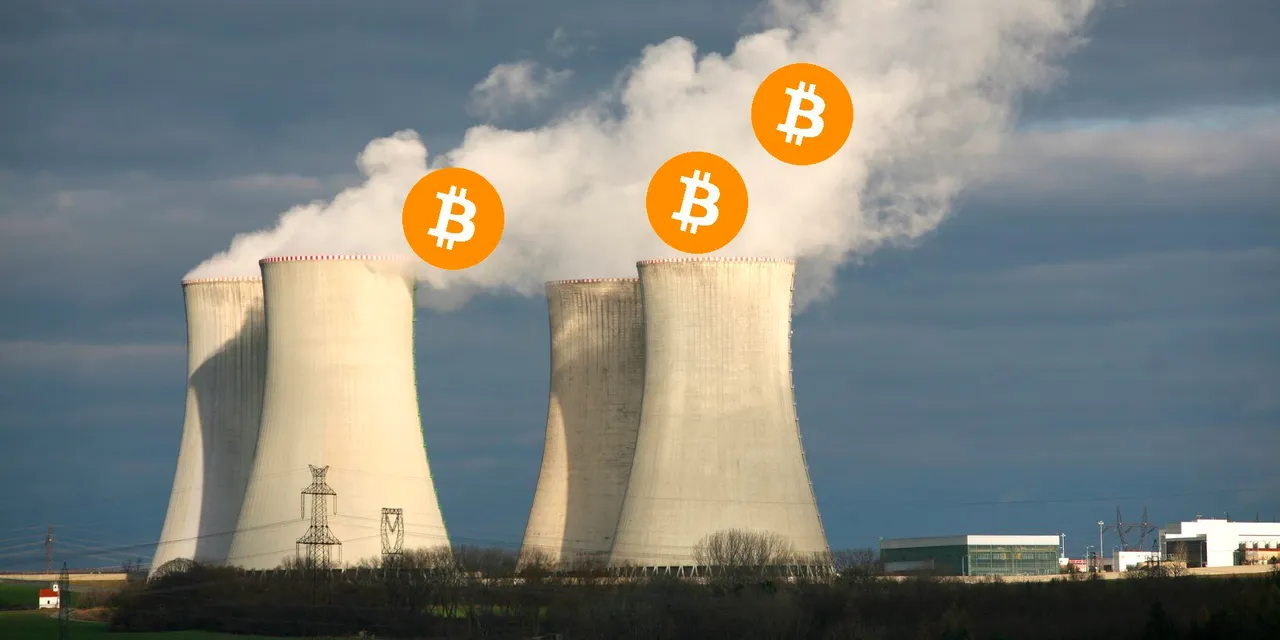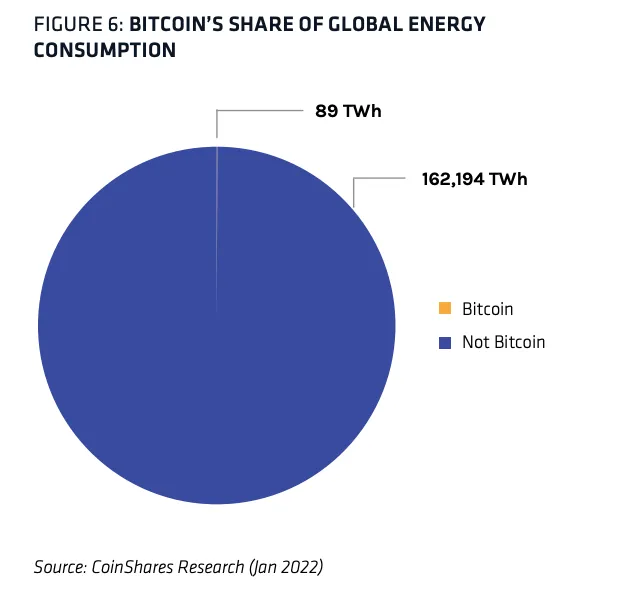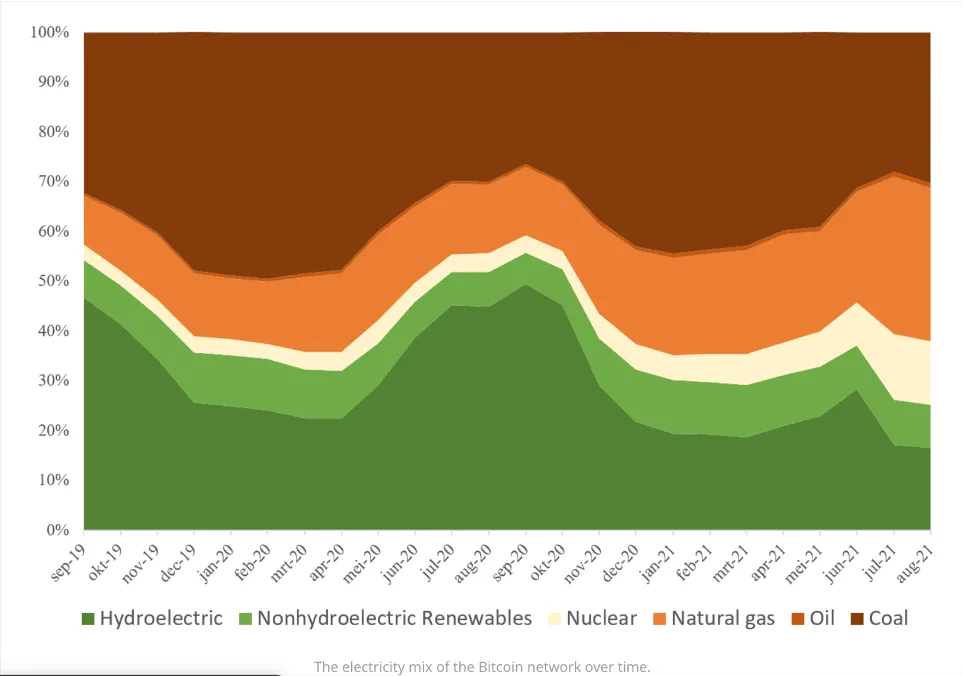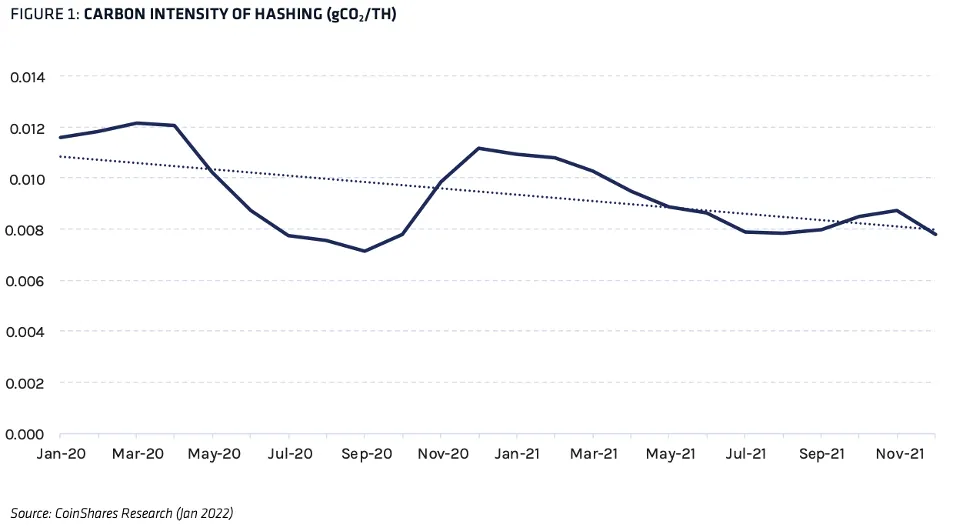
This topic has become public knowledge, and many people are talking about it; not all of them, however, knowing what they are saying and whether the sources of their information are reliable or just Sunday morning bar talk.
I've already addressed this hot topic that electrifies (haha) all the people of the world and even many political sides. Whether it is then an empowerment towards a current issue such as global warming - not to be confused at all with climate change due to a feeble (spotless) solar activity - is not certain. Some ride the wave to get consensus.
But let us come to the treatment of the topic.
After a short period of "terror" in Europe, where it was feared a ban on all mining-farms that validate blockchain of the type of BTC (Proof of Work) a ruling has declared that you can continue to mine.
This motion was presented, in fact, because the validation by PoW has a rather high energy consumption and then a ban would have meant a lower use of fossil fuels.
For this reason many miners thought that a solution could be the best possible: renewable sources.
The numbers
The estimated consumption to sustain the BTC blockchain consumes roughly 89 TeraWatt per hour (TW/h).
As you hear many say, that's the energy consumption of an entire nation such as could be Argentina, the UAE or Sweden.
This is the consumption of the Bitcoin network worldwide
Questo argomento è diventato di dominio pubblico, e molti ne parlano; non tutti, però sapendo ciò che dicono e se le fonti delle loro informazioni sono attendibili o semplici chiacchiere da bar la domenica mattina.
Ho già affrontato questo tema scottante che elettrizza (ahahaha) tutte le persone del mondo e anche molti schieramenti politici. Che poi sia una responsabilizzazione nei confronti di un tema attuale come il riscaldamento globale - da non confondere assolutamente con i cambiamenti climatici dovuti ad una flebile attività solare (spotless) – non è certo. Alcuni cavalcano l’onda per ottenere consensi.
Ma veniamo alla trattazione dell’argomento.
Dopo un breve periodo di “terrore”, in europa, dove si paventava una messa al bando di tutte le mining-farm che validano blockchain del tipo di BTC (Proof of Work), una sentenza ha dichiarato che si può continuare a minare.
Questa mozione era stata presentata, appunto, perchè la validazione mediante PoW ha dei consumi energetici piuttosto elevati e quindi una sua messa al bando avrebbe implicato un minor utilizzo di combustibili fossili.
Per questo motivo molti miners hanno pensato che una soluzione potesse essere la migliore possibile: le fonti rinnovabili.
I numeri
Il consumo stimato per il sostentamento della blockchain di BTC è all’incirca 89 TeraWatt per Ora (TW/h).
Come si sente dire da molti, corrisponderebbe al consumo energetico di un’intera nazione quale potrebbe essere l’Argentina, gli Emirati Arabi o la Svezia.
Questo è il consumo della rete Bitcoin a livello mondiale

It is also true, however, that to sustain the banking service and other data centers, it is estimated a consumption of 250 TW/h.
Objectively, Bitcoin's consumption is quite high, but it is still less than half of the current banking service.
Moreover, it must be considered that 3% of all the world's electricity produced is dissipated during transport.
To make the order of magnitude understood, this 3% is indicatively 3 times the consumption of BTC.
Let's take a look at how the energy demand for the operation of mining farms is composed.
In 2021, a report by the New York Times, indicated that Farms powered by renewable energy ranged from 40% to 75%; while a report by CoinShares, (also confirmed from https://digiconomist.net/bitcoin-energy-consumption/) that as of December 2021, renewable energy was used in a 30% share of total Farms (the Bitcoin network was used as a sample).
E’ altrettanto vero, però che per il sostentamento del servizio bancario e altri data center, si stima un consumo di 250 TW/h.
Oggettivamente sono consumi piuttosto elevati quelli di Bitcoin, ma sono comunque sempre meno della metà del servizio bancario attuale.
Inoltre, occorre considerare che il 3% di tutta l’energia elettrica mondiale prodotta viene dissipata durante il trasporto.
Per far capire l’ordine di grandezza, questo 3% è indicativamente 3 volte il consumo di BTC.
Vediamo come è composta la richiesta di energia per il funzionamento delle mining farm.
Nel 2021, un rapporto del New York Times, indicava che le Farm alimentate con energie rinnovabili variano dal 40% al 75%; mentre un rapporto della CoinShares, (confermato anche da https://digiconomist.net/bitcoin-energy-consumption/) ha rilevato che a dicembre 2021 le energie rinnovabili sono state utilizzate in una quota del 30% sul totale delle Farm (come campione è stata utilizzata la rete di Bitcoin).

(surce: https://digiconomist.net/bitcoin-energy-consumption/)
Energy distribution was as follows:
35% Fossil (fuel oil, coal, etc.).
30% Renewable energy
24% Natural Gas
11% Nuclear
Despite the fact that the world of cryptocurrencies is definitely growing, proportionally the consumption of electricity has also increased.
Research by CoinShares, however, has highlighted an extremely important factor: against an increase in electricity consumption, there has been a decrease in carbon production per terahash of computing power.
La distribuzione dell’energia è stata la seguente:
35% Fossile (olio combustibile, carbone, ecc..)
30% Energie rinnovabili
24% Gas Naturale
11% Nucleare
Il mondo delle criptovalute sia in decisa crescita, proporzionalmente anche i consumi di elettricità sono aumentati.
Una ricerca di CoinShares ha però evidenziato un fattore estremamente importante: a fronte di un aumento di consumo elettrico, si è verificato un abbassamento della produzione di carbonio per terahash di potenza di calcolo.

This means that miners are leaning toward using cleaner energy.
Green energy
The very first factor why Miners are turning their eyes to renewable energies, is mainly related to an economic issue.
The more the Bitcoin blockchain increases, proportionally the difficulty of solving the algorithm will also increase, which is why consumption will increase proportionally.
So electricity produced by renewable energy does not have a cost component: fuel (of whatever nature it is).
This push by Miners to get active in the use of renewables will also benefit the use of energy for all other human needs.
A number of Miners have come together in a consortium and with EnergyWeb have signed an agreement with the intention of making the energy supply for Mining Farms transparent.
This agreement is called the Crypto Climate Accord.
Another extremely important aspect for Miners, is that renewable energy is not subject to market trends and external events that can increase fuel costs.
A current example of this is the war in Ukraine, which has driven up natural gas prices substantially.
"Limits" of renewable energies
However, renewable energies have limitations in their use that may make it necessary to store electricity.
Take wind power, for example: production depends on the intensity of the wind. While as for the solar ... at night the panels do not produce.
At the moment the most "reliable" source turns out to be hydroelectric: once production starts, it is rather constant.
Energy dissipation in the plants is a problem that afflicts both types of supply, both renewable and fossil.
More performing and optimized plants are being studied, but it will also be necessary to deal with the complexity created by the introduction of energy from multiple resources.
For this reason, the networks will first grow and then the improvement phase will begin.
Example of the inefficiency of the systems we have in Norway: the energy in the north, produced almost entirely with water, when it arrives in the south of the nation has a cost 10 times higher.
In order to bring considerable improvements to the plants, Germany has allocated 55 billion dollars and expects by 2030 to complete the projects.
@discover-it, I would like to know what you think
That's enough for today, part 1 ends here. Stay tuned, that tomorrow I publish the second part!!!
Questo significa che i miners sono propensi ad un utilizzo di energie più pulite.
Energie green
Il primissimo fattore per il quale i Miners stanno volgendo il proprio sguardo alle energie rinnovbili, è soprattutto legato ad una questione economica.
Più la blockchain di Bitcoin aumenta, in proporzione aumenta anche la difficoltà di risoluzione dell’algoritmo, per questo motivo il consumo aumenterà in proporzione.
Quindi l’elettricità prodotta dalle energie rinnovabili non ha una componente di costo: il combustibile (di qualsiasi natura esso sia).
Questa spinta dei Miners ad attivarsi per l’utilizzo di fonti rinnovabili porterà un vantaggio anche all’utilizzo dell’energia per tutte le altre necessità umane.
Alcuni Miners si sono riuniti in consorzio e con la EnergyWeb hanno firmato un accordo con l’intenzione di rendere trasparente l’approvvigionamento di energia per le Mining Farm.
Questo accordo prende il nome di Crypto Climate Accord.
Altro aspetto estremamente importante per i Miners, è che l’energia rinnovabile non soggetta all’andamento del mercato e ad eventi esterni che possono far lievitare i costi dei combustibili.
Esempio attuale è la guerra in Ukraina che ha apportato ai prezzi del gas naturale dei rincari consistenti.
“Limiti” delle energie rinnovabili
Le energie rinnovabili hanno però delle limitazioni nel loro utilizzo che potrebbero rendere necessario un immagazzinamento dell’energia elettrica.
Prendiamo ad esempio l’eolico: la produzione dipende dall’intensità del vento. Mentre per quanto riguarda il solare… di notte i pannelli non producono.
Al momento la fonte più “affidabile” risulta essere l’idroelettrico: una volta avviata la produzione, è piuttosto costante.
La dissipazione dell’energia negli impianti è una problematica che affligge entrambe le tipologie di fornitura sia quelle rinnovabili che le fossili.
Sono in fase di studio degli impianti più prestanti e ottimizzati, ma occorrerà fare i conti anche con la complessità che si viene a creare per l’immissione di energia da parte di più risorse.
Per questo motivo le reti prima cresceranno e poi inizierà la fase di miglioramento.
Esempio dell’inefficienza degli impianti lo abbiamo in Norvegia: l’energia al nord, prodotta quasi interamente con l’acqua, quando arriva nella parte sud della nazione ha un costo 10 volte maggiore.
Al fine di portare migliorie considerevoli agli impianti, la Germania ha stanziato 55 miliardi di dollari e conta entro il 2030 di portare a termine i progetti.
Per oggi è abbastanza, termina qui la prima parte. Rimanete sintonizzati, che domani pubblico la seconda parte!!!

Here the second part
